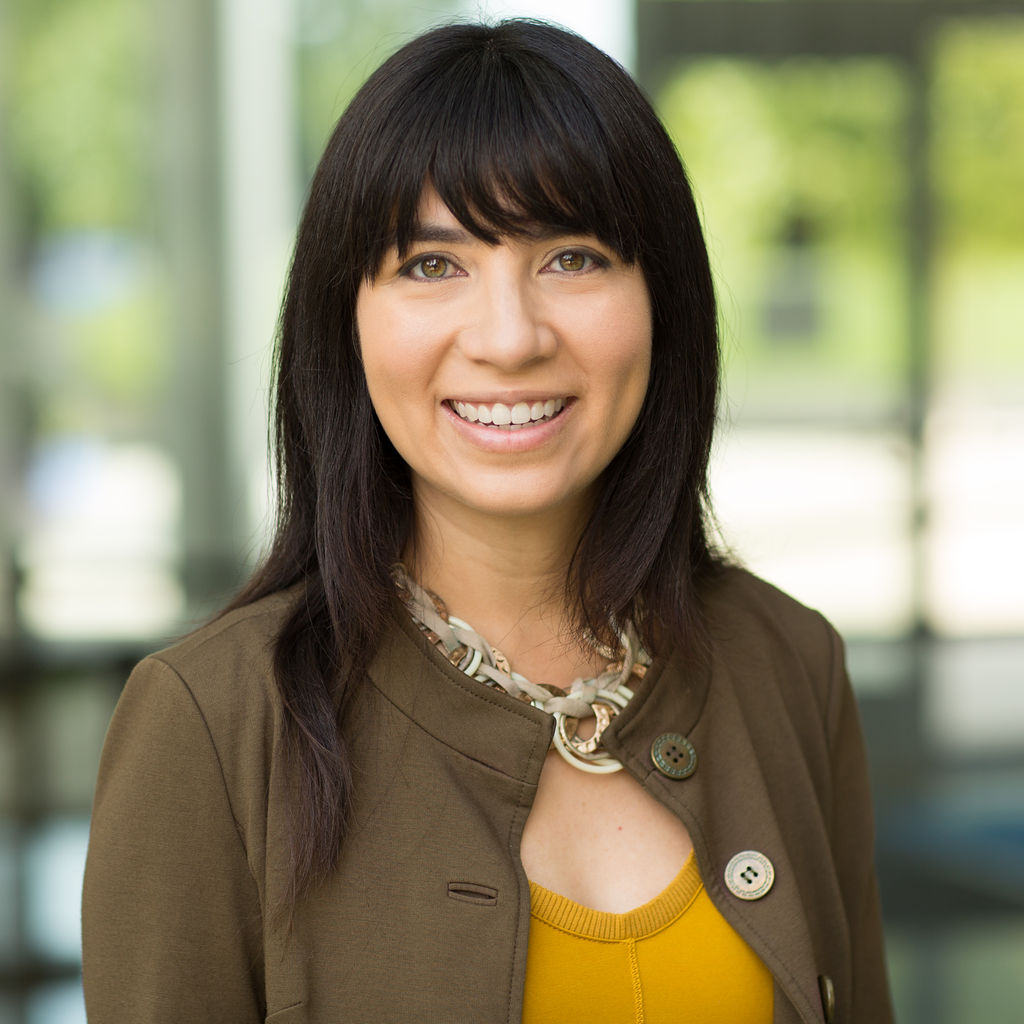How the child care system can improve health today and tomorrow.
Early care and education (ECE) professionals are the original influencers. After parents and family, children look to the other significant adults in their lives for role models, guidance, and learning opportunities. ECE providers play a critical role in shaping a child’s development, growth, and habits during one of the most dynamic periods of their lives.
In the United States, most children under five (59%) are in some type of non-parental care, with 62% in center-based care and 20% in a family child care home. As the country continues to recover from the COVID-19 pandemic, state leaders are exploring how to rebuild the child care sector, which was significantly impacted by increased operating costs, reduced workforce, and lower enrollment, as well as temporary and permanent closures.
While immediate investments in the child care sector are essential for economic recovery, increasing access to quality child care with a focus on health and wellness can build the foundation for lifelong health and increase equity
For more than a decade, Nemours Children’s Health has been partnering with state agencies and early childhood organizations to embed healthy eating and physical activity standards into the systems that support ECE providers, such as licensing, professional development, and technical assistance networks. While our specialty is pediatric health care, we know that 80% of the impacts on a child’s health take place outside of the health care setting.
Since millions of young children eat, play, and learn in child care, we work to transform these settings and systems.
Strengthening ECE systems for health takes time, but we have identified a few key strategies to help state and local leaders get started.
1. Invest time and resources into meaningful and diverse partnerships
Meaningful and intentional relationships are at the core of successful systems-change work. A variety of voices for change aligned around a common goal can have a powerful influence on ECE systems to promote and advance healthy habits for young children.
Nemours currently partners with 12 states to implement the Healthy Kids, Healthy Future Technical Assistance Program (HKHF TAP) to integrate healthy eating and physical activity into state ECE systems. To set a foundation for systems change, our state partners established new or leveraged existing stakeholder groups composed of cross-sector agencies and organizations.
Many HKHF TAP states have reported a positive impact made possible by the relationships established through the stakeholder groups. States can enhance their partnerships for systems change by:
- Convening a diverse stakeholder group with organizations that work toward similar goals to improve health, nutrition, and physical activity for young children. Stakeholders may need to establish a workgroup that focuses specifically on health and wellness in ECE — if one doesn’t already exist — to lead this work at the state level. Participating agencies and organizations may include departments of health, child care resource and referral agencies, university extension programs, and other early childhood organizations.
- Ensuring that community voices and those with lived experience are included in the stakeholder group. Engagement of those with lived experience should inform potential practice and policy changes.
- Seeking non-traditional partners to engage in the stakeholder group. Organizations such as grocery store associations, faith-based leaders, and private sector partners can offer resources and insights to support healthy practice and policy change.
- Engaging stakeholders in planning, decision-making, and brainstorming solutions to barriers. Often, stakeholder groups are stuck in information-sharing mode only, but real change comes through intentional collaboration, shared planning, and inputs. States can also establish smaller workgroups to drive action steps informed by the larger group.
- Mapping partner efforts to understand how different organizations and agencies are already supporting healthy eating and physical activity in ECE. This prevents the duplication of efforts and reveals gaps in service delivery or program coverage.
When state systems establish intentional programs and standards around improved practices in ECE, it can promote providers’ participation and impact children on a larger scale.
2. Use a common framework to identify opportunities for change
The ECE system in any state is complex and has many potential levers for change, including regulatory (i.e., licensing), professional development, and financing. Identifying where to influence and promote healthy habits can be a daunting task.
However, the use of a common framework has helped guide systems improvements in many states. Since 2018, our partners have used the Centers for Disease Control and Prevention (CDC)’s Spectrum of Opportunities Framework for State-Level Obesity Prevention Efforts Targeting the Early Care and Education Setting to guide their work under HKHF TAP. The framework identifies nine areas in which to integrate healthy eating and physical activity practices, including:
- Licensing & administrative regulations
- Child Care Food Program (CACFP)
- Quality Rating & Improvement System (QRIS)
- ECE funding streams (subsidy, pre-K, Head Start)
- Pre-service & professional development systems
- Statewide technical assistance networks
- Statewide recognition and intervention programs
- Statewide access initiatives (Farm2ECE)
- Early learning standards
State leaders and program managers can use the framework to explore the most feasible opportunities within their own state context. Once partners build consensus around a few opportunities to pursue, they can develop a shared action plan with steps, resources, and measurements of change.
Efforts that have been shaped by the Spectrum of Opportunities include:
- Embed nutrition and physical activity standards into quality rating and improvement systems, early learning standards, and licensing requirements.
- Provide professional development and technical assistance opportunities for ECE professionals to increase their knowledge of best practices and strategies. Include nutrition and physical activity training opportunities in state professional development systems.
- Analyze CACFP participation and develop a statewide initiative to increase provider participation and increase access to CACFP, particularly in underserved communities.
- Encourage the use of American Rescue Plan Act Child Care Stabilization grants to enhance health and wellness in ECE programs.
- Establish a statewide recognition system to recognize providers who are making positive changes to integrate best practices in health and wellness. This program can also offer technical assistance and resources to help providers improve their child care environment.
3. Embed equity, diversity, and inclusion
Equity, diversity, and inclusion (EDI) should be at the center of any systems-change efforts.
Poor health is too often determined by ZIP code and impacted by structural inequities. Many families, particularly in communities of color or in low-income neighborhoods, lack access to healthy and affordable foods, safe outdoor spaces for physical activity, and quality ECE programs.
Intentionally thinking about the equity implications of practice and policy changes can identify and address gaps. State leaders and partners should consider:
- Providing equity, diversity, and inclusion training for stakeholder groups. EDI training and capacity building helps partners establish a shared understanding of EDI and the root causes of health inequities in communities.
- Completing an equity impact review or other assessment to understand how proposed changes in practice and policy could potentially cause unintended consequences. Use the information from the review to develop a strategy to intentionally address gaps in service and access.
Progress in Kansas
Across the country, ECE state stakeholders are already transforming their systems to promote healthy practices. Child Care Aware® of Kansas — Nemours Children’s HKHF TAP state partner — and local child care resource and referral agencies have engaged 168 ECE programs, serving 2,459 children in Go NAPSACC, which guides ECE programs through simple steps to make healthy changes.
Child Care Aware of Kansas is advancing a plan to improve equity within its organization and state work, which includes the exploration of organizational equity readiness assessments and the translation of health promotion materials to increase access to these resources statewide.
They have also partnered with the Kansas Breastfeeding Coalition to launch a breastfeeding toolkit to help providers become a designated breastfeeding-friendly ECE program.
Employing these key strategies to engage the right partners, employ a robust framework, and center an overall focus on equity, Kansas and other states across the country have the power to transform health and wellness outcomes for young children. When state partners collaborate on intentional systems-change in early care and education, they help ECE professionals to influence healthy habits for life.

About Nemours Children’s Health
Nemours Children’s Health is one of the nation’s largest multistate pediatric health systems, including two freestanding children’s hospitals and a network of nearly 80 primary and specialty care practices across five states. Nemours seeks to transform the health of children by adopting a holistic health model that utilizes innovative, safe, and high quality care, while also caring for the health of the whole child beyond medicine. Nemours also powers the world’s most-visited website for information on the health of children and teens, KidsHealth.org.
The Nemours Foundation, established through the legacy and philanthropy of Alfred I. duPont, provides pediatric clinical care, research, education, advocacy, and prevention programs to the children, families, and communities it serves.
Nemours currently partners with 12 states to implement the Healthy Kids, Healthy Future Technical Assistance Program (HKHF TAP) to integrate healthy eating and physical activity into state ECE systems.
- Alabama
- Delaware
- Florida
- Georgia
- Hawaii
- Iowa
- Kansas
- Louisiana
- Maine
- South Carolina
- Wisconsin
- Virginia
Resources to Support States in Promoting Healthy Habits
Nemours is currently funded by the Centers for Disease Control and Prevention (CDC) under a five-year Cooperative Agreement (6NU38OT000304) to support statewide early care and education (ECE) organizations to integrate best practices and standards for healthy eating, physical activity, breastfeeding support, and reducing screen time in ECE systems and settings. The views expressed in written materials or publications, or by speakers and moderators do not necessarily reflect the official policies of the Department of Health and Human Services, nor does the mention of trade names, commercial practices, or organizations imply endorsement by the U.S. Government.
-

Georgia S. Thompson
Senior State System Specialist, Nemours Children’s Health
At Nemours, Georgia supports initiatives working to improve health outcomes for young children. She has worked in early care and education for over 15 years, beginning as a preschool teacher and advancing to PK-12 education, professional development, quality improvement, and higher education.
-

Roshelle Payes
Project Director of Early Childhood and Health, Nemours Children’s Health National Office of Policy and Prevention
Roshelle leads the CDC-funded Healthy Kids, Healthy Future Technical Assistance Program, which works to embed healthy eating and physical activity best practices in early care and education systems and settings. She has more than 15 years of project management and child nutrition experience.






